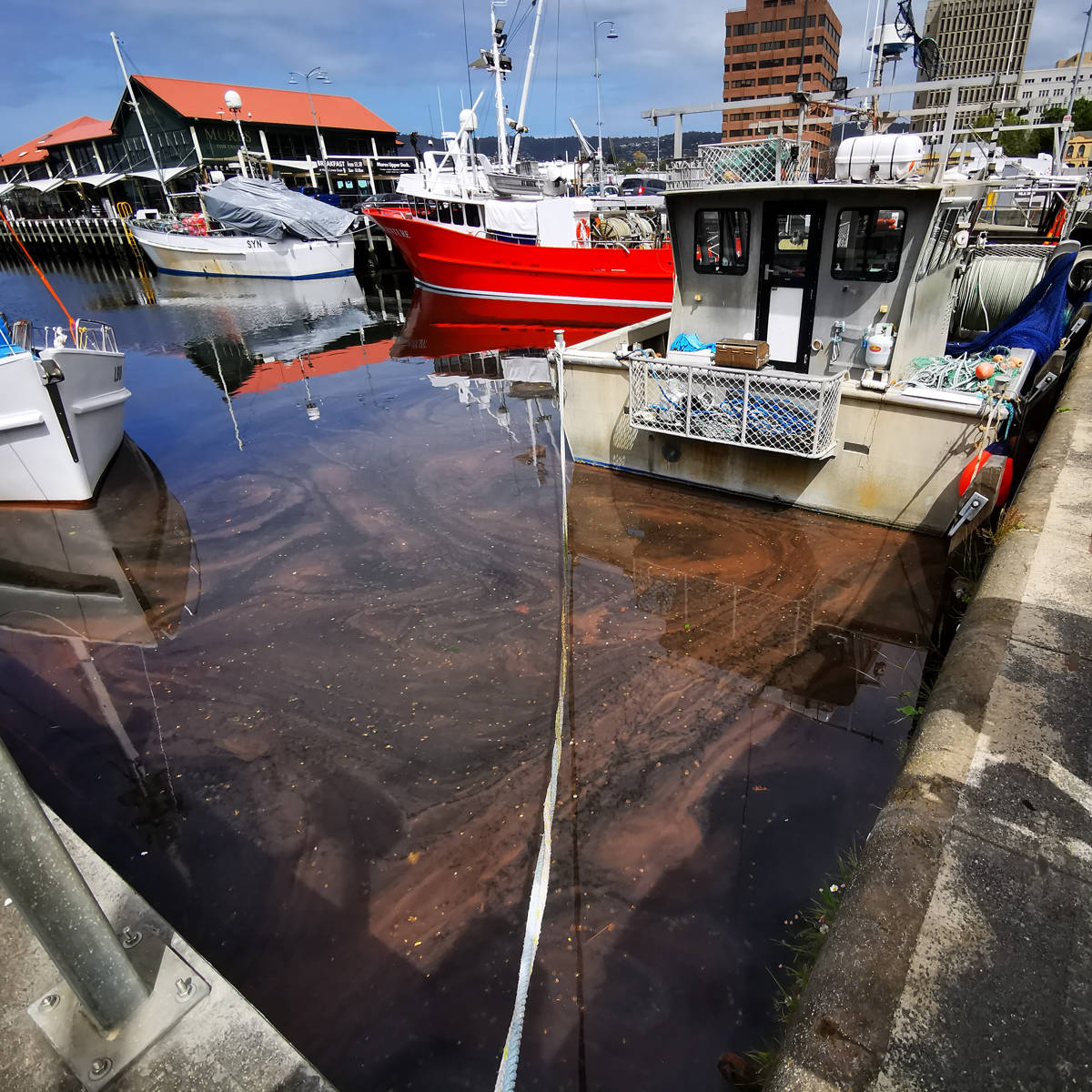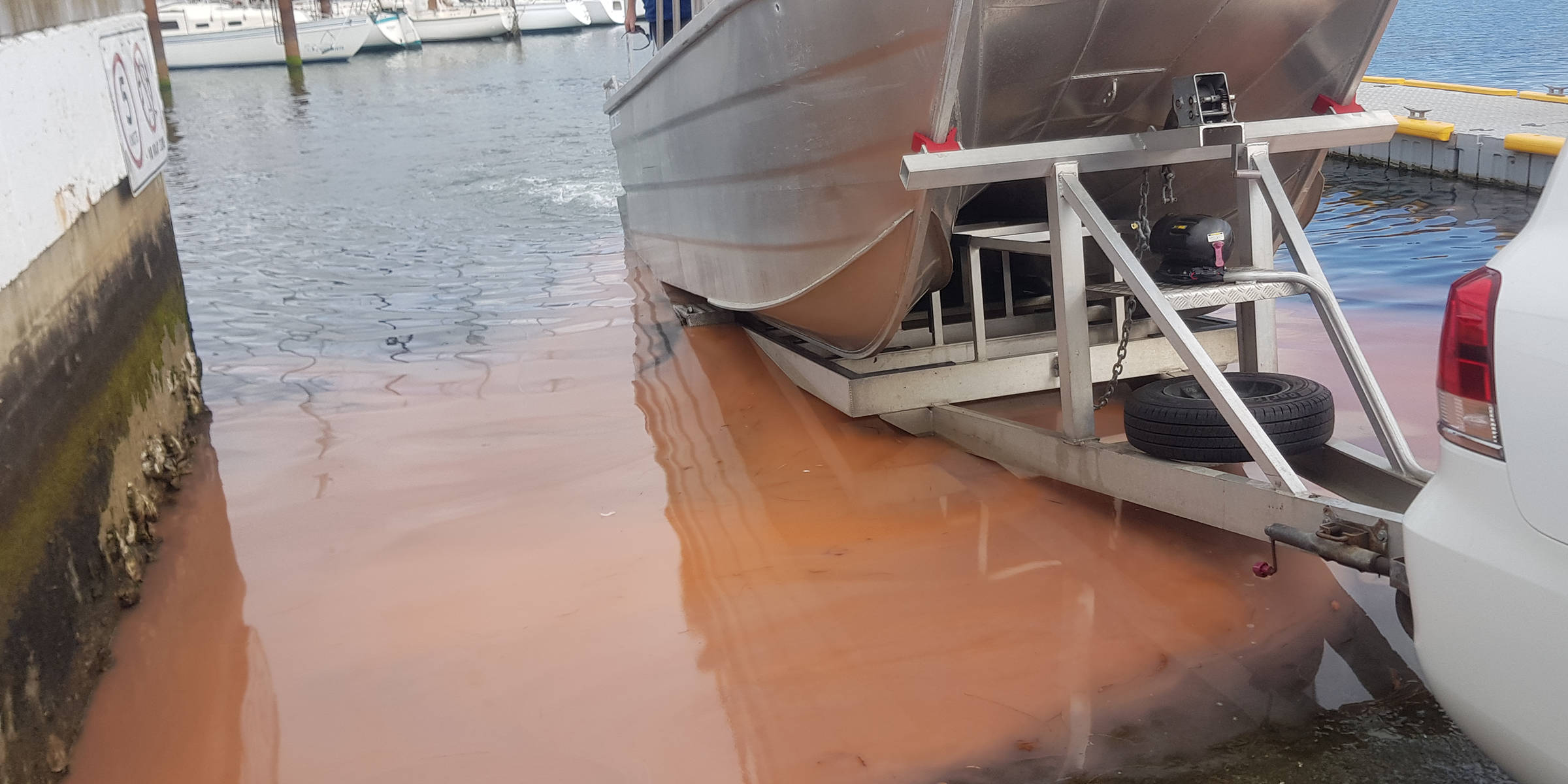
‘Red tide’ at the Hobart waterfront, October 2020.
Noctiluca scintillans is the scientific name of the marine organism (a dinoflagellate) that is the most common cause of red tides in Tasmanian waters. The same species is also responsible for the magnificent night-time light display called bioluminescence.
Noctiluca is a voracious feeder that can go through tremendous growth periods and produces large surface slicks, which may cause the water to change colour. Warm water temperatures and food availability have been identified as triggers to algal blooms such as these. Since the 1990s, Noctiluca blooms have changed from rare to being a prominent red-tide organism in Tasmanian coastal waters, all year round. Largest blooms are in summer when the water temperatures are highest.
Noctiluca is weakly ichthyotoxic (toxic to fish). High ammonia levels, generated by a large bloom, can irritate fish and interfere with feeding patterns, and when a large bloom breaks down it can also generate low oxygen conditions in sheltered waters, thus potentially impacting both farmed and wild fisheries.
Noctiluca is considered a nuisance species, but is not regarded as harmful to humans, even though large blooms are best avoided for recreational swimming (because of skin irritation).

‘Red tide’ at the Kangaroo Bay boat ramp, 14 February 2023.
Image: Derwent Estuary Program
Further information
- Noctiluca scintillans species details by University of Tasmania.
- The expansion of Noctiluca scintillans across mainland Australia and Tasmania is discussed in this 2020 report.
